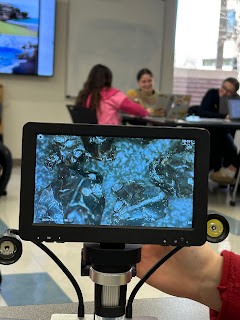The big question addressed in lab, and a description of what you did.
REVIEW: Different types of sand:
water (ocean)- polished, smooth, similar in size
glaciers - polished, smooth, irregular
wind (dune) - opaque, fine grained, frosted, pitted
characteristics of water eriosion - (1) headwaters, most gravity, moving faster, can carry mroe sediment - (2) TRANSFER ZONE, starts slowing down (3) depositional zone, U shaped river basin
when glaciers move acorss land, make U shaped valleys, not moving super fast
Transitioned into Climate Science
Measuring & Mapping, Precipitation in Iowa
How do we know if the goldfinch is in danger in Iowa?
I think they are starting to become endarged due to the evidence, but slowly. There has been an increase in rainfall which makes it harder for birds to survive.
A description of what you learned in Thursday's lecture.
We took an exam during lecture.
Answer questions about the weekly textbook reading:
What did you learn?
I reread the chapters to help review for the exam. As I was reading, I looked more closely into understanding the rock cycle.
I now understand that Igneous rocks come from magma and there are 2 types, intrusive and extrusive. Intrusive rocks form inside the earth and have larger crystals whereas extrusive rocks form on the outside of earth and are smaller crystals. Then it undergoes either weathering & erosion or heat & pressure. It then can become a metamorphic rock. After it undergoes the changes, it becomes sediments that eventually create sedmientary rocks.
What was most helpful?
It was helpful to see the clock diagram to better understand when things were created/formed on earth. I know have a better understanding that animals came wayyy before humans, and plants came before animals.
What do you need more information on?
I would like to know more information on the Geodes and what the calculations mean. I do not fully understand this concept compared to others.
What questions/concerns/comments do you have?
Do all rocks have to become sedimentary? Or can they always be igneous or metamorphic?


Comments
Post a Comment